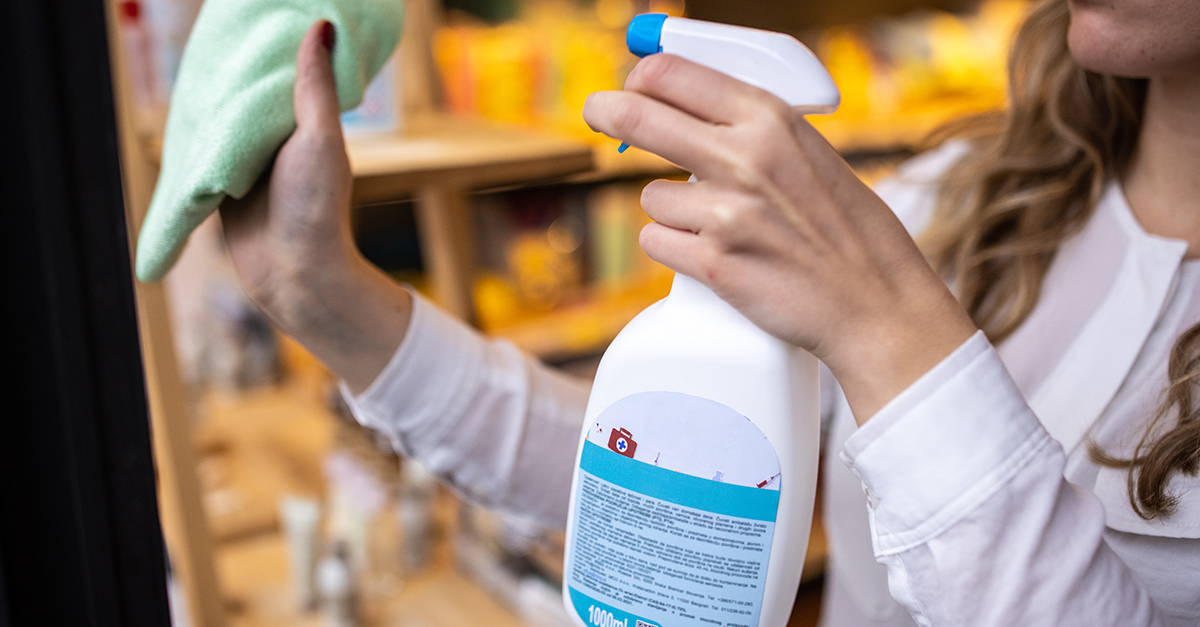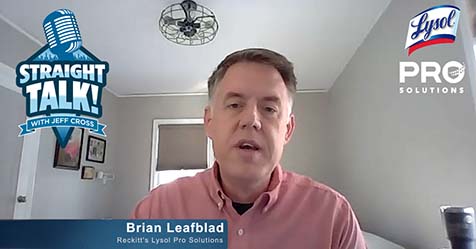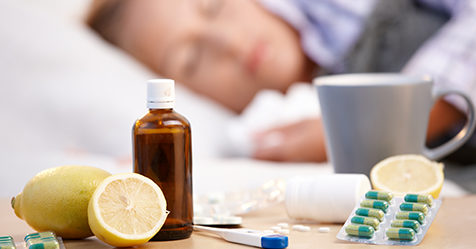In 2023, ISSA conducted 54 in-person workshops offering practical tips on cleaning for health, training 893 industry professionals.
Among these professionals:
- Only 13%, or 116 cleaning professionals, reported they had received training in the past five years
- Many of the workers reported not having access to personal protective equipment (PPE) such as gloves, eye protection, or designated work clothes
- Many could not explain the phrase “handle in accordance with good industrial hygiene and safety practice” as stated on safety data sheets (SDS)
- The majority—90% or 804 workers—could not recall one ingredient that was in a cleaning product that they use at work.
Basic cleaning knowledge
Cleaning is the process of removing pollutants from the environment and putting them in their proper place. The purpose of cleaning is to protect human and animal health and to restore and
maintain the appearance of property and indoor spaces.
To be professional, cleaning services and their employees must master a body of knowledge, skills, and behaviors to maintain a healthy and safe built environment and succeed in business. They need to understand cleaning methods and procedures; tools, equipment, and products; business and management skills; and the science to justify why we clean the way we do. Professional
cleaners must understand how the cleaning products and the ingredients they contain work.
The use of cleaning products is ubiquitous, with a wide variety of types and formulations available on the market. Based on the application type, cleaning products can be divided into general purpose cleaners and specialty cleaners (such as kitchen cleaners, restroom cleaners, glass cleaners, carpet cleaners, floor care products, etc.).
Because cleaning products contain different chemicals, you should always check the product specifications and application instructions before use. Also, you should never mix cleaning products
unless you can confirm that the mixture is safe and effective, as some mixtures of safe products can become very hazardous.
Common cleaning product ingredients
Cleaning product ingredients and their concentrations vary greatly from product to product and change rapidly depending on the available ingredients and consumers’ needs. As product formulation is proprietary information, manufacturers generally do not disclose the details. However, if a cleaning product contains hazardous chemicals, it must be accompanied by an SDS that discloses the identity of the hazardous chemicals, health and physical hazards associated with it, exposure limits, and use precautions.
Almost every cleaning product has at least one of the following basic ingredient elements:
- Surfactants allow a product to wet surfaces, emulsify greasy soils, and lift away dirt. The term “surfactant” is made by combining the words surface, active, and agent.
- Solvents dissolve soils.
- Builders adjust pH to optimize cleaning performance and suspend soils.
- Bleaches oxidize and remove soils and lighten the color of stains.
- Enzymes accelerate the rate of a chemical reaction to break down soils. Specific enzymes target different soils.
- Chelants bind to positively-charged metal ions, such as calcium and magnesium, which can be found in water used for cleaning. Without the chelant, the product would need additional surfactant or the user would need to use a greater amount of the product for it to be effective.
- Biological additives break down organic soils into smaller particles, allowing them to separate more readily for subsequent removal by surfactants.
- Preservatives allow the cleaning product to remain useable for several months after production.
Risks associated with cleaning chemicals
Cleaning products contain chemical ingredients with various properties that might be toxic, explosive, flammable, self-reactive, oxidizing, or corrosive. Exposure to chemicals can occur through inhalation, dermal (skin) absorption, or ingestion and might lead to adverse health effects.
Although no comprehensive list of chemical hazards exists, common hazards include damage to the lungs, skin, eyes, and mucous membranes; allergic reactions; asthma; and cancer. Employers and their staff need to consult and plan appropriately for chemical exposure risks.
Risk assessments are not just paper exercises; they are about taking steps to prevent harm and adverse health.
Cleaning product effects on IAQ
Cleaning products sometimes contain chemical ingredients listed as asthmagens, carcinogens, reproductive toxins, or toxic air contaminants. Ingredients of concern include quaternary ammonium chlorides or “quats;” glycols and glycol ethers such as 2-butoxyethanol or ethanolamine, and some alcohols such as benzyl alcohol, ammonia, and chlorinated hydrocarbons. When applied on surfaces, the volatile components of these chemicals enter the air during and after the cleaning processes, potentially affecting indoor air quality (IAQ) and occupant health.
Other factors that influence volatile organic compound (VOC) concentrations in the air include the type of cleaning tasks (e.g., application rate and procedure), the ventilation rate of the
building, and the physical characteristics of the cleaning product (e.g., aerosols vs. liquids).
The method by which the cleaning product is delivered can have a substantial effect on chemical exposure. For instance, aerosol sprays emit a large amount of small cleaning product droplets at high velocities, resulting in a much greater chemical inhalation exposure. Pump dispensers, in contrast, emit a smaller amount of larger droplets at a lower velocity.
In addition to the chemical emissions caused by active ingredients, constituent or inactive ingredients in cleaning products can also react with oxidants (such as ozone) in indoor air and
produce many other emissions with adverse effects. For example, terpenes associated with fragrances (such as pinene and limonene) can quickly react with ozone and generate secondary
pollutants including formaldehyde and ultrafine particles.
The most significant health effect potentially caused by cleaning product inhalation is the development or exacerbation of respiratory illnesses including asthma. The Work-Related Asthma Prevention Program (WRAPP) in the California Department of Public Health (CDPH) found that the rate of work-related asthma among janitors and cleaning staff is nearly double the
rate in the overall workforce. Nationally, in states that keep track of work-related asthma, 12% of all confirmed cases are associated with cleaning products, according to a 2020 study published in
the Journal of Occupational and Environmental Medicine.
The importance of labels
ISSA instructors advise that professional cleaners read the label of every product they use. But how helpful is that advice? The answer depends on whether cleaning staff know what to look for
on a label and whether the label includes the information they need.
Information on labels should:
- Help with decision making.
- Ensure the product is used safely.
- Ensure the product is used effectively and solely for the purpose by which the manufacturer intended.
- Lend authenticity to products by listing the manufacturer’s address, product identification codes, and barcodes for tracking. Many brands also include QR codes on their product labels to access websites with additional information such as instructional videos and SDS access.
Others include an ingredient table listing the purpose of each chemical. Attendee activities in a recent ISSA workshop illustrated the enormous gap in users’ knowledge and understanding of cleaning ingredients. For example, very few attendees could correctly answer the question “What actions do you take if you read the product label or SDS and see the following statements?”
- This chemical is considered hazardous.
- This product causes burns to eyes, skin, and mucous membranes.
- Although not expected, heart conditions or chronic respiratory problems such as asthma, chronic bronchitis, or obstructive lung disease may be aggravated by exposure to high concentrations of vapor or mist.
- Avoid contact with eyes, skin, and clothing.
- Ensure adequate ventilation.
- Use personal protective equipment as required.
- Reacts with other household chemicals such as toilet bowl cleaners, rust removers, acids, or products containing ammonia to produce hazardous irritating gases, such as chlorine
and other chlorine compounds. - Very toxic to aquatic life with long-lasting effects.
Identifying chemicals on a label In every ISSA workshop, the instructors recommend contacting the manufacturer if you have questions about a product or want more information on the chemical ingredients. Manufacturer websites list their contact information, including phone numbers. Many websites allow users to send a message directly to the company.
Workshop instructors also illustrate how challenging it can be to know which chemical ingredients are in your cleaning product by reading the list on the label. Consider the
following examples:
- 2-Butoxyethanol is used as a solvent. Product labels may list it as Butyl CellosolveTM, butyl glycol, ethylene glycol monobutyl ether (EGBE), or 2-BE.
- Coal tar dye gives cleaning products a specific color. Labels may list it as P-phenylenediamine, coal tar solutions, naptha, estar, or benzin B70.
- Monoethanalomine (MEA), diethanolamine (DEA), and triethanolamine (TEA) are emulsifying ingredients that work to combine two immiscible liquids in a suspension such as oil and water.
- Nonylphenol ethoxylates (NPEs) are surfactants used to enhance a cleaning product’s effectiveness. Labels may list them as nonylphenol (NP) and nonylphenol ethoxylates (NPEs).
- Phosphates are used as chelating agents to prevent minerals in water from interfering with cleaning. They help prevent magnesium and calcium ions in water from binding with surfactants. Labels may list them as sodium tripolyphosphate.
- Sodium lauryl sulfate (SLS) and sodium laureth sulfate (SLES) are surfactants that aid in removing dirt and oil from surfaces and create foamy lather. Labels may list them as sodium lauryl sulfate, sodium laureth sulfate, sodium salt, ammonium laureth sulfate, sodium n-dodecyl sulfate, dodecyl sulfate, and sodium dodecyl sulfate.
Making informed choices
ISSA has partnered with the Penn State College of Medicine and the City University of New York (CUNY) School of Medicine on a two-year project, Making Safer Choices: Research and Practical Toolkit Development for Businesses and Disadvantaged Communities to Use Safer and More Sustainable Cleaning Products. This project will advocate for the use of cleaning products with safer ingredients by creating partnerships with manufacturers and business stakeholders. It will provide education and technical assistance to businesses and professional cleaning staff, regardless of their language or socioeconomic status. Please contact me at [email protected] if you would like more information.
For more information on cleaning product ingredients, watch a GBAC TV Industry Alert at youtube.com/watch?v=8uHbDiEXvx4.




